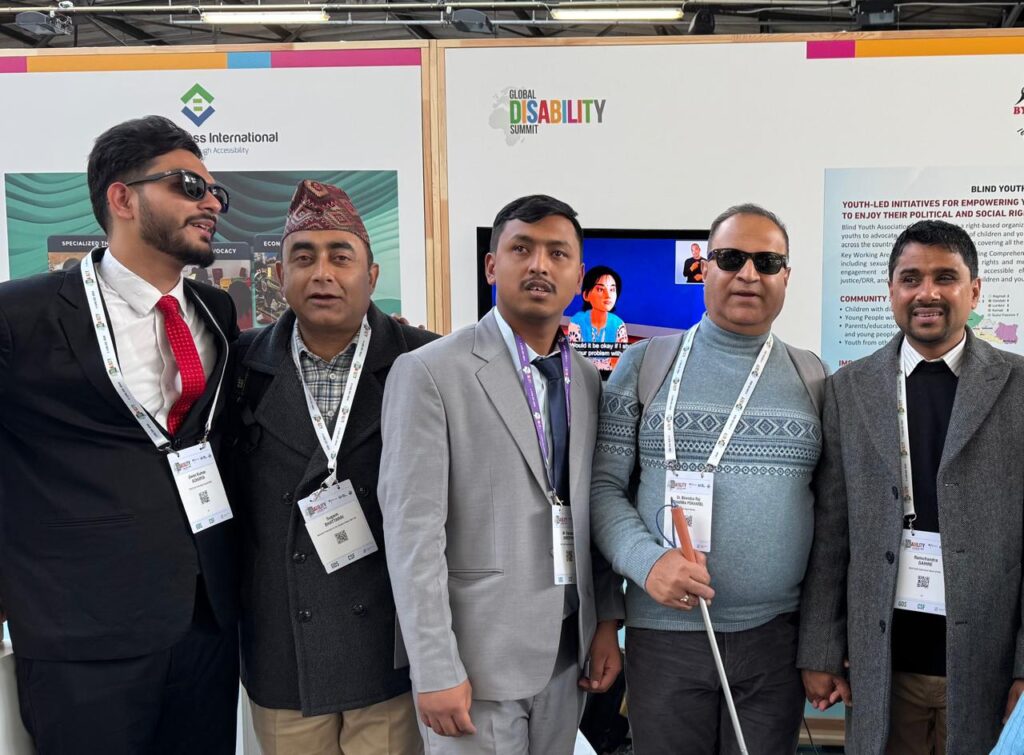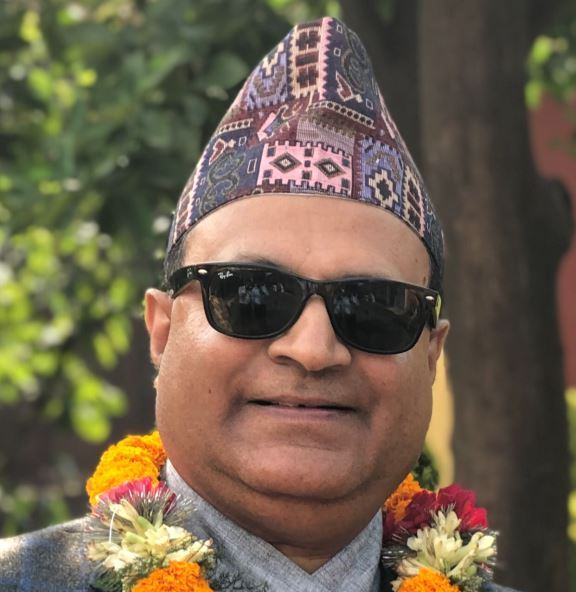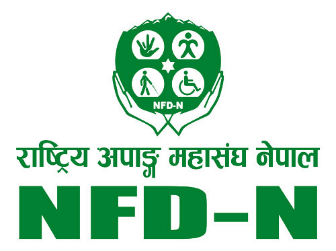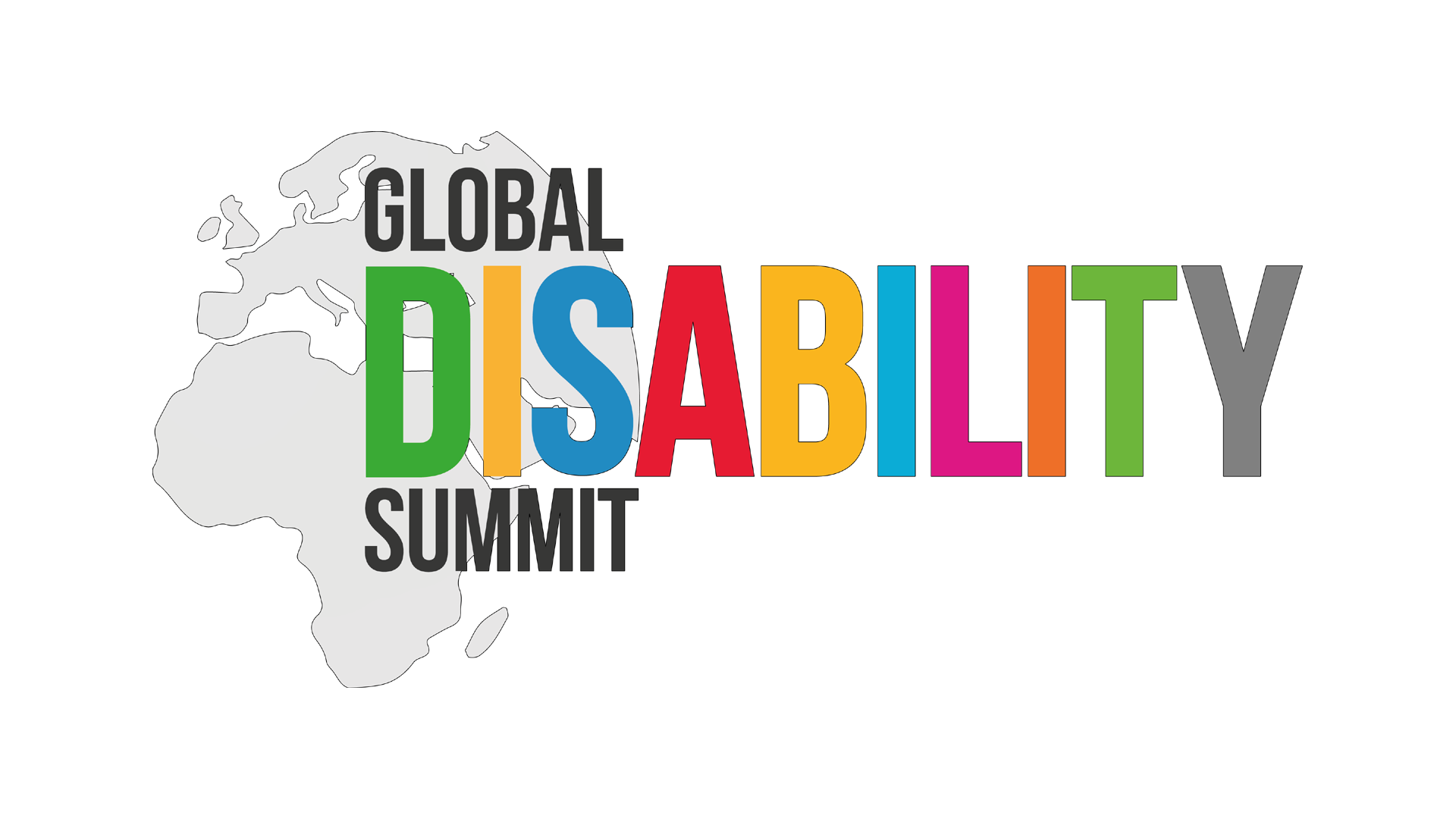Global Disability Summit 2025: unique approach for embracing Nepali Disability movement within Global Network
- Dr. Birendra Raj Pokharel
Country Coordinator, Abilis Foundation
Understanding the Global Disability Summit (GDS):
The Global Disability Summit (GDS) is the world’s leading platform for fostering the rights and inclusion of persons with disabilities around the world. Launched in 2018, the Summit brings together governments, organizations of persons with disabilities (OPDs), civil society, the private sector, international organizations, and development partners to accelerate progress on disability-inclusive development and humanitarian action.
The GDS is grounded in the United Nations Convention on the Rights of Persons with Disabilities (CRPD) and supports the implementation of the 2030 Agenda for Sustainable Development. It serves as a recurring mechanism to promote international cooperation, mobilise commitments, and strengthen accountability for disability inclusion across all sectors.
History of GDS:
The first Global Disability Summit took place in London in 2018, co-hosted by the UK’s Department for International Development (now FCDO), the Government of Kenya, and the International Disability Alliance (IDA), attracting around 1,200 delegates.
The second Summit, held in 2022 due to the COVID-19 pandemic, was co-hosted by Norway and Ghana with IDA. Over 7,000 participants joined remotely, reinforcing global commitment to disability rights and inclusion.
Both summits were watershed moments for the disability rights movement, generating substantial commitments from governments, Development partners, and civil society, which resulted in new policies, increased funding for disability-inclusive programs, and enhanced multi-stakeholder collaboration.1
Global Disability Summit 2025: A Transformative Milestone:
The third Global Disability Summit was held on April 2–3, 2025, in Berlin, co-hosted by Germany, Jordan, and the International Disability Alliance (IDA). GDS 2025 built upon the successes of previous summits and marked a transformative step forward in accelerating global progress toward disability inclusion2. Over 4,700 participants from more than 160 countries gathered to elevate disability inclusion worldwide.

What Distinguished GDS 2025?
Transformative Impact and Strategic Approach: GDS 2025 was designed not merely as a continuation of previous efforts but as a bold leap forward. It emphasized building a unified, cross-sectoral approach to advance inclusive and sustainable development cooperation and humanitarian action. The Summit created new opportunities for collaboration among OPDs, governments, civil society, and the private sector through inclusive dialogues, regional lead-up events, and joint commitments.
OPD Leadership and Participation: Reaffirming the principle of “Nothing About Us Without Us,”: GDS 2025 prioritized the active leadership of persons with disabilities. OPDs were instrumental in shaping the Summit’s themes and priorities through meaningful consultations and were encouraged to lead or co-lead joint commitments. This helped ensure that the Summit remained grounded in the lived experiences and priorities of persons with disabilities.
Focus on Implementation: GDS 2025 placed a strong emphasis on turning commitments into action. The Summit showed innovative practices and lived experiences from around the world, highlighting what works and how it can be replicated or scaled. The goal was to drive real, tangible change in communities by promoting implementation over mere intention.
Rights-Based Advocacy: Throughout the Summit, participants reaffirmed the centrality of the CRPD. GDS 2025 advocated for rights-based commitments, aiming to eliminate discrimination and ensure legal, and policy frameworks align with human rights standards. The Summit helped solidify previous gains and paved the way for more effective accountability mechanisms.
National Ownership and Responsibility: GDS 2025 underscored the importance of national ownership in advancing disability inclusion. Countries were encouraged to present clear commitments that addressed both legislative and financial challenges at the national level. The Summit reinforced the message that disability inclusion must be a political priority embedded in national development agendas.
Mainstreaming Disability in Development Cooperation: GDS 2025 made strategic efforts to bridge the gap between disability rights and broader development agendas. By emphasizing Article 32 of the UN CRPD, the Summit pushed for disability inclusion to be a central component of all international development and humanitarian assistance.
Tackling the Funding Gap: Recognizing the chronic underfunding of disability-inclusive initiatives, GDS 2025 highlighted the need for sustainable and innovative financing. The proposal for a Global Disability Fund was a key conversation point, intended to ensure that OPDs and grassroots organizations have the financial support needed to sustain advocacy and programmatic work.
Data-Driven Decision Making: GDS 2025 elevated the importance of data and evidence. It promoted the use of tools like the Global Disability Inclusion Report and called for the collection and use of disaggregated data by disability, gender, and other factors. These efforts were aimed at driving informed, targeted, and effective policy-making.
Adoption of the Amman-Berlin Declaration: The summit culminated in the adoption of the Amman-Berlin Declaration, which sets a bold target: “15 percent for the 15 percent”—ensuring that at least 15 percent of international development programmes explicitly include disability inclusion by the next summit in 2028. Over 90 governments and organizations endorsed this declaration by the end of the event.
GDS 2025 was a pivotal moment in the global disability movement. Through its inclusive approach, commitment to action, and emphasis on rights and accountability, it has laid down a renewed foundation for sustained progress. The outcomes of the Summit now serve as a call to action for all stakeholders to deliver on their commitments and ensure a world where persons with disabilities can flourish and fully participate in implementation of the Amman-Berlin Declaration.
Visibility of Delegates from Nepal in GDS 2025:
The Summit witnessed an inspiring turnout, with over 4,700 enthusiastic delegates representing more than 160 countries. Leading the way was the host nation, Germany, with an impressive 727 participants (30.4%), warmly welcoming the global community. The United Kingdom followed with 121 delegates (5.1%), and the United States closely behind with 116 delegates (4.9%), reflecting strong international commitment.
Co-host Jordan contributed significantly with 67 delegates (2.8%), while Nepal and Kenya proudly shared the fifth position, each represented by 49 delegates (2.0%). Brazil was close behind with 48 participants (2.0%), followed by 46 from Canada (1.9%), and 39 each from India and Italy (1.6%).
The vibrant participation from every corner of the world truly reflected the collective spirit and shared dedication to advancing disability rights and inclusion globally.
There was meaningful and impactful participation of OPDs and development partners from Nepal at the Summit. Their active engagement not only reinforced Nepal’s commitment to the Sustainable Development Goals (SDGs) but also contributed significantly to the drafting of the Amman-Amman-Berlin Declaration. By sharing valuable expertise and advocating for greater accountability, they helped drive global momentum for disability inclusion.
Similarly, OPDs from Nepal played a vital role in the Civil Society Forum (CSF), held on April 1, 2025, at the same venue, on the eve of the Summit. The Forum brought together over 1,500 participants from around the world and opened with powerful messages from civil society leaders and government representatives. The discussions underscored the urgency of building meaningful partnerships with OPDs, protecting the space for independent civil society, and laying a strong foundation for the success of GDS 2025.
Grounded thoughts of OPDs from Nepal in GDS:
Upholding principles of “Nothing About Us Without Us”: The summit emphasized the principle “Nothing About Us Without Us”—central to the UN CRPD. Full engagement of OPDs ensures that policies and commitments reflect lived realities. For Nepal, embedding this principle means shaping disability inclusion policies that are truly representative and grounded in local needs.
Shaping Effective National Commitments: OPDs that participated in GDS 2025 push for transparent, accountable commitments. Their presence accelerates Nepal’s progress toward inclusive legal reforms, financing frameworks, inclusive education, decent work, health equity, and accessible cities—aligned with GDS focal areas.
Youth Empowerment and Intersectional representation: Representation of youth led OPDs like BYAN and youth leadership amongst persons with Intellectual disabilities offers few powerful case of youth engagement and inter-sectionality, that embraced meaningful representation in CSF and collaborated to draft the “Call to Action on the Meaningful Engagement of Youth with Disabilities.” And “Call to Action for Indigenous persons with disabilities”. BYAN hosted an exhibition visited by over 1,000 delegates, and elevated topics like inclusive SRHR and accessible education. Their active involvement amplified youth-led experiences and inspired national strategies emphasizing young and inter-sectional community of persons with disabilities.
Accountability & Resource Mobilization: The 15 percent for the 15 percent target allows OPDs to hold donors, development agencies, and governments accountable for inclusive programming. By advocating for disability-inclusive budgeting and monitoring frameworks, OPDs strengthen Nepal’s ability to channel resources effectively for inclusion reforms in all tiers of the Government.
Knowledge Exchange & Partnerships: At GDS 2025, OPDs networked with governments, UN agencies, funders, and peer organizations. Such engagement enables Nepali OPDs to access global best practices, join technical initiatives (e.g., inclusive urban resilience, accessible education), and secure collaborative partnership for future national programmes. The Abilis Foundation organised meeting with Grantee OPDs from Nepal and connected country representatives with several development partners such as WHO, World Bank and CBM. Likewise, NFDN joined its partnership meeting with DPOD and its global partners, developed the shared goals and future strategy.
The participation of Organisations of Persons with Disabilities at GDS 2025 in Berlin was not symbolic—it was strategic. OPDs shaped the Amman-Berlin Declaration, elevated youth voices, strengthened accountability mechanisms, and catalyzed visibility for the global disability inclusion agenda.
GDS 2025 commitments:
Throughout the Summit, more than 800 commitments were made by governments, the private sector, OPDs and development actors to enhance accessibility and ensure the meaningful participation of persons with disabilities. Top Commitments from GDS 2025 are listed as.
FCDO: Will launch an Assistive Technology Investment Vehicle through the AT2030 programme, aiming to raise $60 million by 2026. It will also co-chair the GLAD Network to foster stronger global partnerships for disability inclusion.
UNICEF: Commits to scaling up investment in disability inclusion, aiming for 10% of its annual budget to children with disabilities by 2030, expanding disability data collection, and scaling inclusive education and protection systems across 50 countries.
IDA : Will strengthen OPDs in over 100 countries to influence national policies. It will also launch a leadership programme for 80 young persons with disabilities and partner with the UN Global Disability Fund to advance CRPD implementation in 50 countries.
Germany: Creates the Resilient and Inclusive Cities Hub (RICH) with €10 million in funding to improve urban accessibility, and will invest €5 million—in partnership with Jordan—in inclusive education. It also commits to improving the capacity of regional actors to promote the inclusion of people with disabilities in Africa.
Jordan: Will implement a National Action Plan to guarantee full participation of persons with disabilities in elections by 2028, and invest 90 million Jordanian dinars to enhance access to education and healthcare.
Inter-American Development Bank: Pledges that 25% of public loans will support disability inclusion across all sectors by 2025.
DFAT Australia: Commits to a disability equity target for its development program—60% of investments performing effectively by 2026, rising to 70% by 2030. Australia will also launch a new initiative to strengthen organizations of persons with disabilities across the Indo-Pacific.
CBM Global: Commits to increasing by 25% the number of projects focused on OPD organizational strengthening by 2027.
The Valuable 500: Will leverage its global network of 500+ companies to accelerate disability inclusion in business, with a focus on leadership, reporting, and representation.
Algerian Government: will develop a national disability strategy by 2027, and also commits to support and strengthen specialized education and teaching institutions with specialized professional staff.
Education Cannot Wait: commits to improving data, evidence, and accountability for inclusive education.
The Zero Project: will promote the Global Disability Summit and its commitments through its annual conference.
Nepal: Though the Government of Nepal failed to make commitments in GDS 2025, and CSO commitments are not listed within the key commitments in the portal, there are several Nepali national stakeholders expressed commitments. The commitments of Civil society actors, OPDs, local affiliates of international NGOs weren’t included in globally visible lists, so the number of commitments from Nepal is higher than mentioned in this article. Here are some remarkable Commitments pledged from Nepal.
- Action on Disability Rights and Development (ADRAD-Nepal) recognized as a national OPD, ADRAD is actively involved in disability-inclusive development and has made multiple commitments through the consortium of persons with disabilities (Detailed commitments is presented in next section.
- Save the Children (Nepal) – part of Save the Children International’s “Call to Action” for disability‑inclusive rights for children, which was a formal Summit initiative. Save the Children committed to ensuring children with disabilities are meaningfully included in programming and pledged stronger collaboration with governments and other key stakeholders. Detailed commitments is available in the commitment portal of GDS3.
- Consortium of OPDs – Nepali OPDs, including Dalit with Disabilities Association Nepal, National Indigenous Disabled Women Association Nepal (NIDWAN), KOSHISH Nepal, Blind Youth Association Nepal (BYAN), and others, united under a “National Disability Summit” held March 5–6, 2025 in Kathmandu. Together, they formulated joint commitments for submission to GDS 2025, however BYAN submitted their soul commitments (Detail commitments can be found in GDS commitment portal4).
GDS commitments of Consortium of OPDs in Nepal led by the author (of this article) in promoting access to education to learners with disabilities:
This commitments of consortium of OPDs has been jointly pledged by “ADRAD-Nepal”, “NFDN”, NAB”, “PFPID”, “DECN and “Abilis Nepal network”.
The purpose of this commitments is to strengthen joint advocacy for promoting Inclusion in education of learners with disabilities, align with international frameworks such as the CRPD and the 2030 Agenda for Sustainable Development, specifically SDG 4, which aims to “ensure inclusive and equitable quality education and promote lifelong learning opportunities for all.”.
The following are specific commitments that the consortium of OPD In Nepal push for the Government in achieving following output results within next 4 years:
(1) The Government of Nepal to be pushed for Updating national education policies (2076 )to ensure they align with Article 31 of the Constitution of Nepal, 16th National Development plan as well as CRPD 24 and SDG 4.
(2) The Ministry of Education shall develop and adopt Operational Guideline for Inclusive Education by next 3 years. This guideline is realised essential to guarantee the right to free, quality and inclusive education for all children with disabilities.
(3) The Government to be pushed for making notable increment in the investment for inclusive education initiatives covering both the developmental revenue of the local and federal Government as well as grants from development partners.
(4) The Government is pushed to establish mechanism for screening of all children from early grades, thereby identification of learners with disabilities and make necessary early intervention with necessary treatment, rehabilitation, habilitation and therapeutic services like speech therapy, counselling and soft skills.
(5) The Government is pushed for adopting Disability inclusive Data module and administered in the public schools in federal, province and local levels. The Centre for Education and Human Resource Development to upgrade the integrated educational management information system (IEMIS) to capture relevant and accurate information in a regular basis, establishing disaggregated data of learners with disabilities for development of inclusive planning process. That helps establishing comprehensive data system to track enrollment, retention, and outcomes for learners with disabilities.
(6) The Government is pushed for retrofitting fulfilling accessibility compliances at least 70% of existing resource Classes and the schools where inclusive education is introduced and ensuring all new schools are built following universal design principles with physical accessibility after carrying out mapping of accessibility standards of the resource classes and make necessary modification to make inclusive stream in the education sector.
(7) The OPD collaboration to be strengthened to adopt educational technology, including e-learning platforms and digital resources like “Sikai Chautari”, to be made accessible to learners with disabilities.
(8) The Curriculum Development Center to be obliged adopting new Unicode standards for producing school level books through mainstream publishing platform, thereby producing teaching contents and textbooks in digital accessible format such as in Epub or DAISY audio format in the same time without additional investment of producing regular printed books. The Center also pushed for providing Braille books, digital accessible books in text and audio format with picture description, sign-language dictionary with elaborated signs, tactile materials, large-print textbooks, and captioned videos, to at least 90% of learners with disabilities by 2030 through their enrolled schools in own communities.
(9) The OPD consortium commits to push Government Establishing inclusive education resource centers in every local levels in collaboration with OPDs, schools, Universities and local Government to support schools, teachers, and learners with disabilities to follow inclusive educational module engaging persons with disabilities in decision-making levels within education management such as School Management Committee (SMC), Parents Teachers Association (PTA) etc.
(10) The OPD collectively work to ensure national curricula are inclusive and meet the diverse needs of learners with disabilities with high priority given to the students with cognitive disabilities like Deafblindness, intellectual disabilities and neuro development conditions such as Autism Spectrum Condition. By the fulfillment of this commitment, standard tools for Individual Education and Learning Plan (IELP) to be adopted addressing the learning need and capabilities of learners with diverse disabilities and execute in the resource classes as well as in Inclusive education stream. It is therefore reviewed existing assessment system and modified with adjustments of diverse disability needs and abilities to apply such assessment system such as alternate method for pictorial or graphic description for visual impaired students, sign-language interpretation of listening test for hearing impaired students, easy text and descriptive approach for learners with developmental disabilities and intellectual disabilities, tactile approach for learners with deafblindness etc.
(11) The Government is pushed to provide, by 2030, assistive devices and technology (e.g., hearing aids, speech-to-text software, and augmentative communication tools) to all learners with disabilities who need them. All schools is thereby equipped all schools with adaptive technologies to support diverse learning needs of learners with disabilities such as Text-to-Speech software, Speech-to-text tools, tablets, laptops and smart boards with internet facilities.
(12) Government is pushed to extend partnership with organizations of Persons with Disabilities (OPDs), private sector entities, and NGOs to expand access to resources and utilization of expertise for inclusive education.
(13) Government and parliament is pushed to ratify “Marrakesh treaty” and provide copyrights exception for producing accessible books for persons with visual disabilities and those having print disabilities.
Localizing the Amman-Berlin Declaration to Strengthen Disability Rights and Inclusion in Nepal
OPDs can be the vehicle to Drive implementation of Amman-Berlin Declaration in Nepal. It is emphasized that the Role of OPDs Impact high to foster execution and make the commitments reality by the end of 2030. OPDs must be represented across key sectors—education, health, employment, humanitarian response, and infrastructure planning—to translate declaration commitments into real change. The strategy should be.
Policy design & CRPD transformation in local legislation: Design disability inclusive laws, accessibility standards, budget allocations Ensures inclusive structures
Programme monitoring Track: Development Partners funded projects against “15 percent” benchmark Enhances transparency & effectiveness.
Awareness & mobilization: Conduct public forums, accessible campaigns, youth outreach Promotes grassroots understanding and inclusion
Capacity building: Train government staff, educators, planners on disability rights Sustains institutional inclusion
International advocacy: Use GDS networks to elevate Nepal’s pledges and progress Attracts further global support
Everyday relevance: Because persons with disabilities are about 2.25 percent of Nepal’s population, their exclusion would leave millions unaccounted for in development planning.
Intersectionality: OPDs represent diverse groups—women, youth, Dalit, Indigenous—ensuring inclusion doesn’t remain tokenistic or narrow.
Sustainability: When OPDs lead design and monitoring, programmes are more resilient, locally relevant, and sustainable over time.
Strategic action to translate the commitments and Amman-Berlin Declaration into reality:
To implement the Amman-Berlin Declaration in Nepal, OPDs must continue to lead—from designing national strategies and advocating for the “15 percent for the 15 percent” target, to monitoring commitments and securing inclusive financing. Their participation ensures that disability inclusion is not just a promise, but a measurable and sustained reality.
National Federation of the Disabled- Nepal (NFDN) organised consultative meeting on 30th April, 2025 to discuss its relevance for organising Post-GDS conference (2025) in Nepal. The purpose of organising post-GDS conference can be filling the gap of understanding of Amman-Berlin declaration and GDS Commitments by the government, civil societies, developmental partners and the OPDs. NFDN also intends to facilitate implementation of Amman-Berlin Declaration in Nepal.
The proposed post-conference brings together NGOs, INGOs, OPDs, UN organizations, civil societies, government bodies and other development partners to deliberate to incorporate the GDS Declaration’s call into action. Commitments alone will not drive change, the value lies in how the commitments are implemented, monitored, and sustained over time. It is now up to governments, donors, development partners, and especially OPDs, to turn these pledges into action.
(End of article)
- https://www.globaldisabilitysummit.org/wp-content/uploads/2024/06/GDS2025-Key-messages-and-Objectives_Mar2024.pdf ↩︎
- www.globaldisabilitysummit.org/ ↩︎
- https://www.globaldisabilitysummit.org/commitments/ ↩︎
- https://www.globaldisabilitysummit.org/commitments/ ↩︎

Country Coordinator, Abilis Foundation


